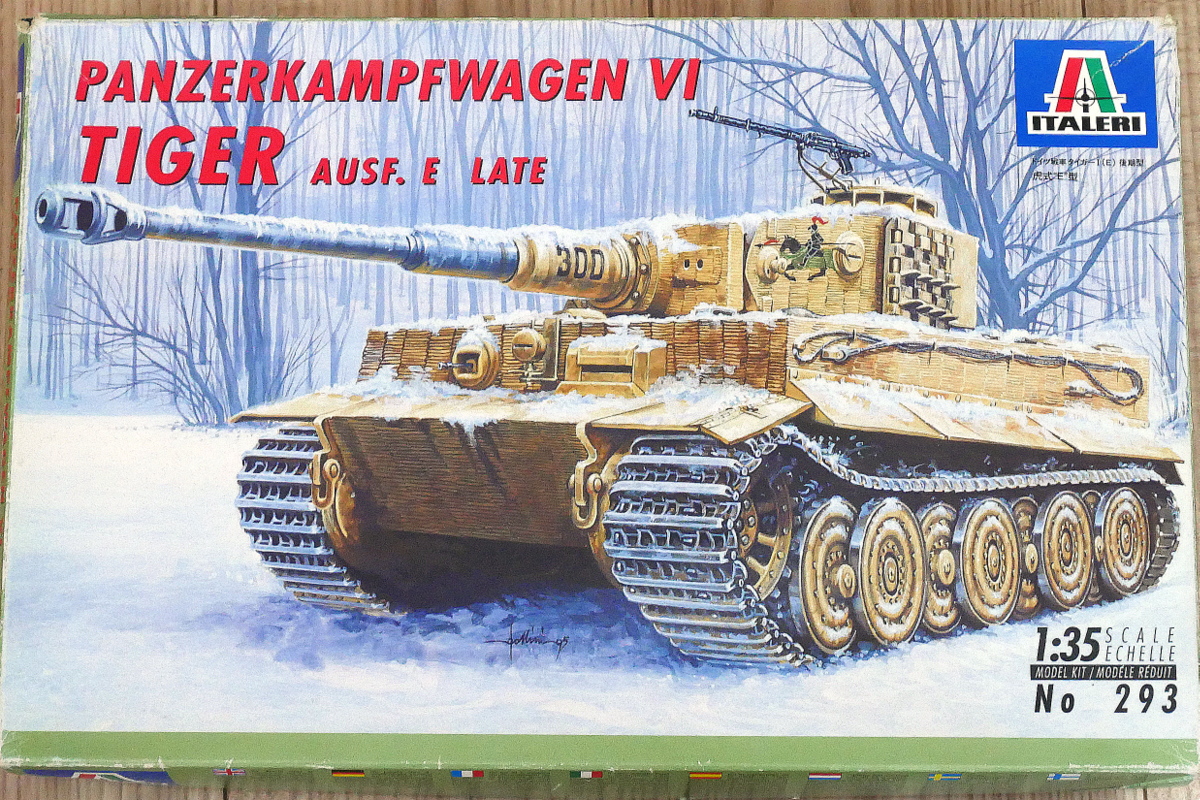
Now, I will try to assemble the Italeri Tiger-I tank, which is pretty old and has always been in the back of the closet.
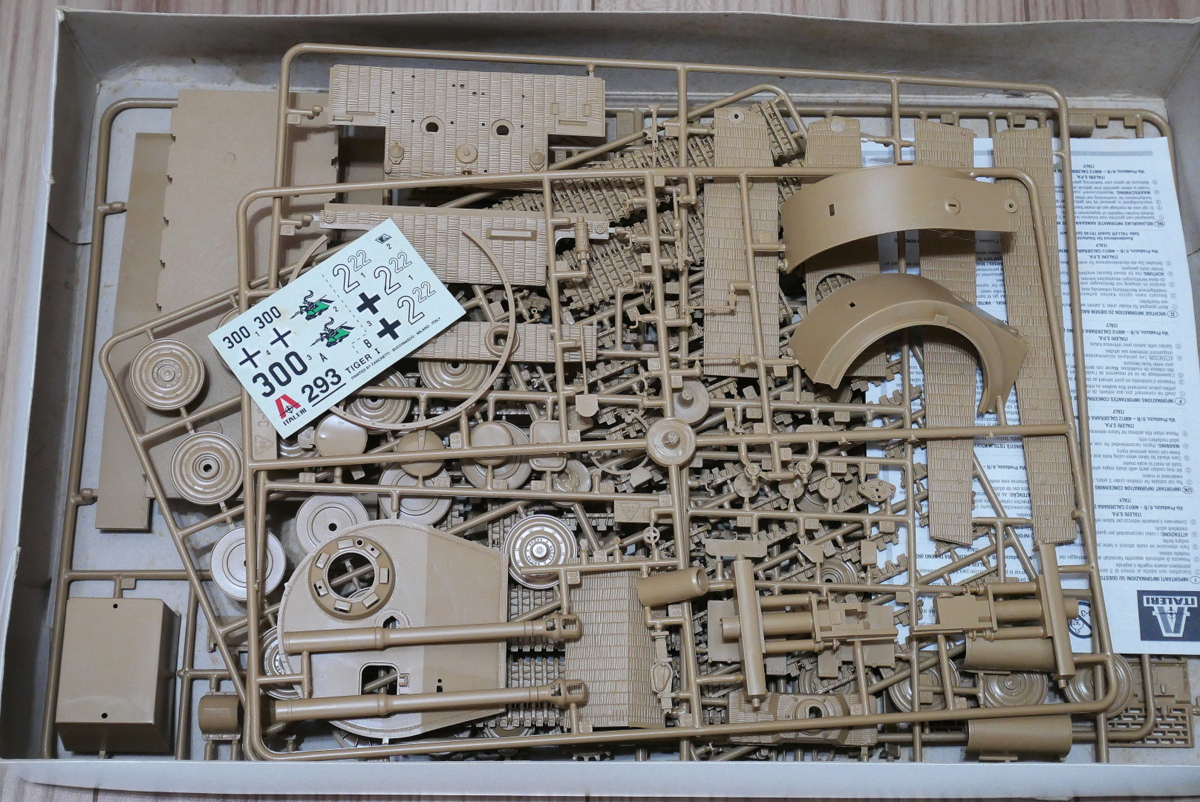
This Italeri kit is probably too old not to have etched parts on the engine grill before it was renewed. Model number 6471 seems to include etched parts, but this kit is old, so it didn’t. This is a pure kit with only plastic parts. I think the old Italeri kit had runners in the box like this. If the decals are too old and ragged, use the ones I kept when I made other kits. I think the 505th Heavy Tank Battalion mark was somewhere, too.
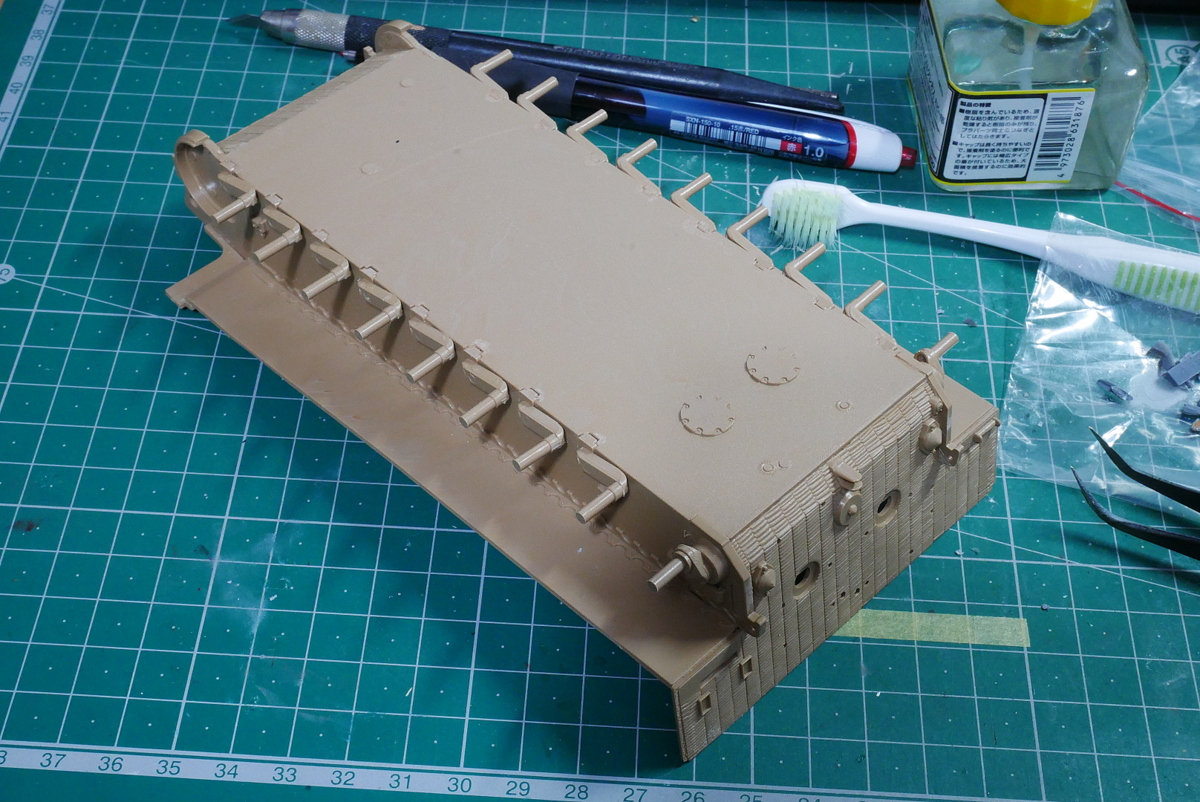
I glued the armored plates on the front and back of the chassis and the shaft of the roller.
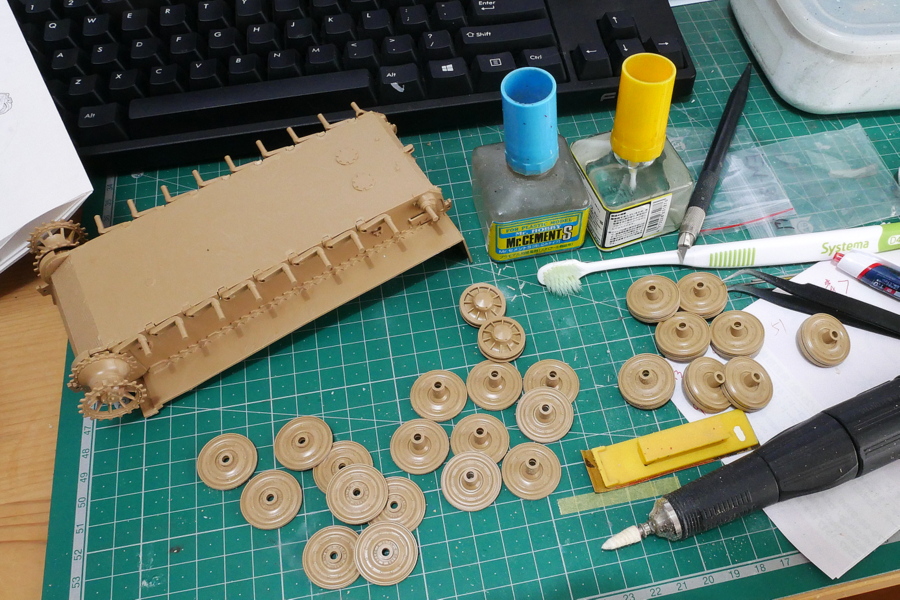
I’m about to install all the rollers and drive sprockets. The drive sprockets and the rearmost guidance wheel should still be in motion because of the attachment of the partially connected tracks. I thought it would be easier to make adjustments later.
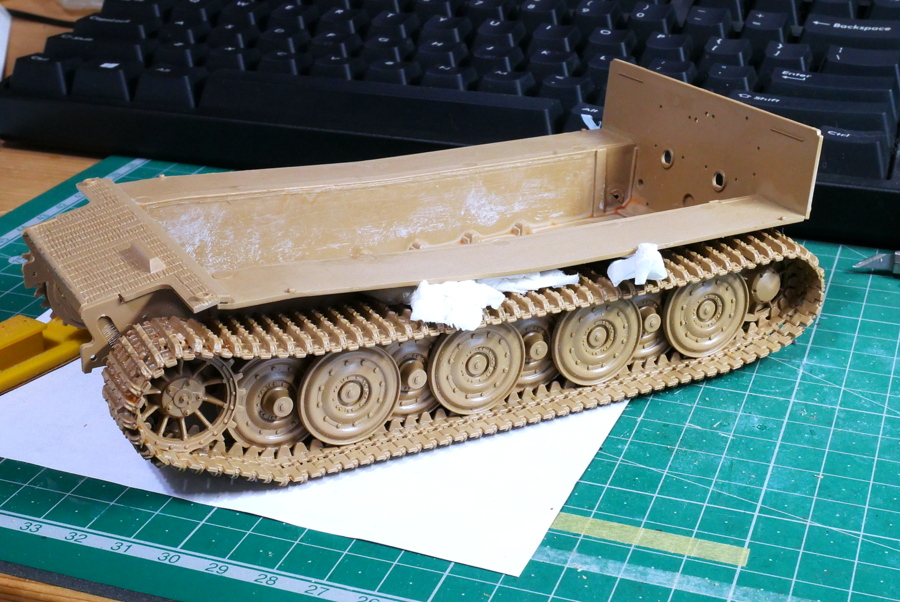
I managed to wind up one side of the track. Quite difficult. A tissue roll is placed between the body and the track to dry so that it can hang naturally.
(2023/08/20)
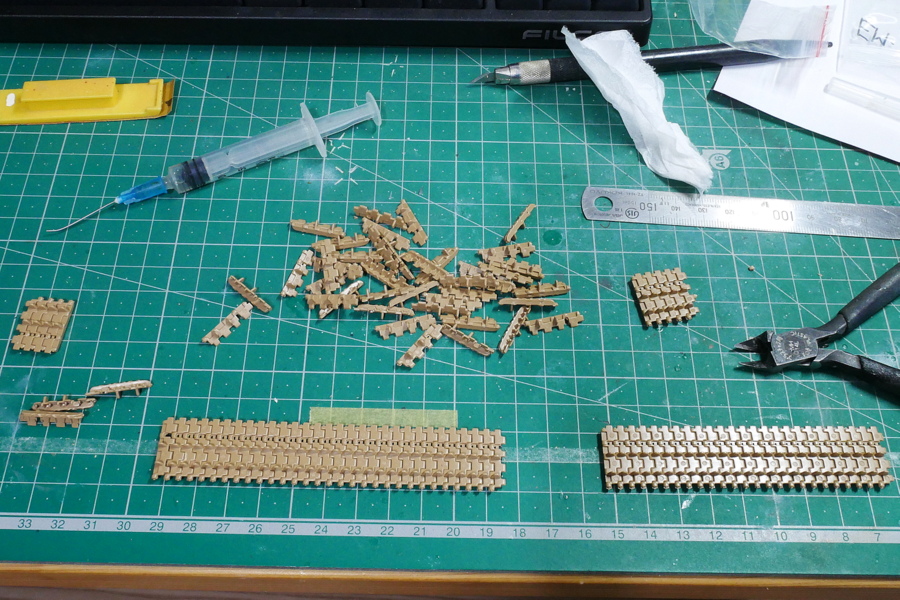
This is the part to use on one side. It isn’t very easy because I have to be careful about what goes where. As it turned out, the parts to be engaged by the starting wheel had to be glued first, which made it difficult to assemble. I didn’t notice that there were two types of one-frame parts, so I ignored them and worked together.
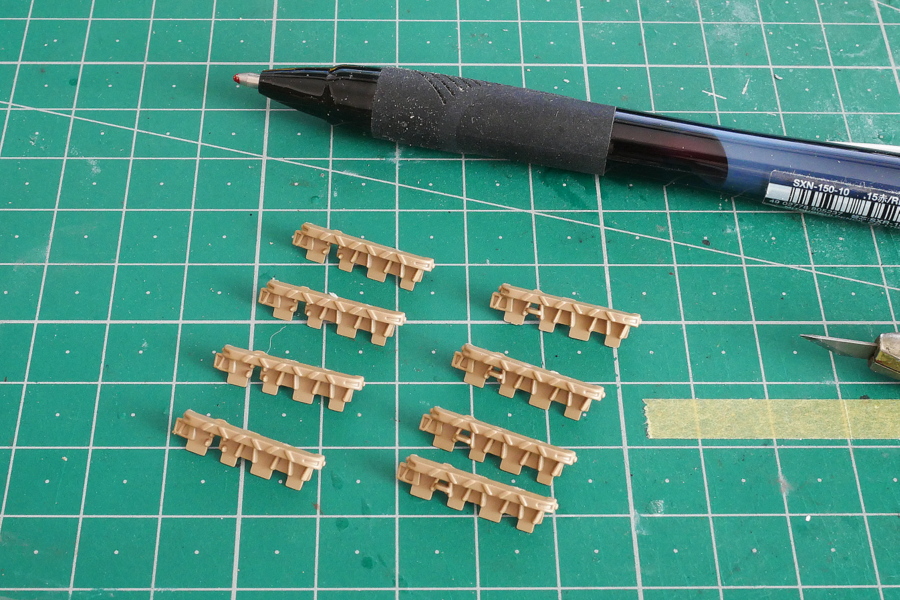
There was a single piece of track, a part that adhered to the side of the turret, and a part that wrapped around the wheel, but it got mixed up and adhered. Recently, I have made many mistakes in gluing without checking the part number on the instruction manual, so I reflect on that. The spare track attached to the turret can be modified later because shaving off some small seems good bumps.
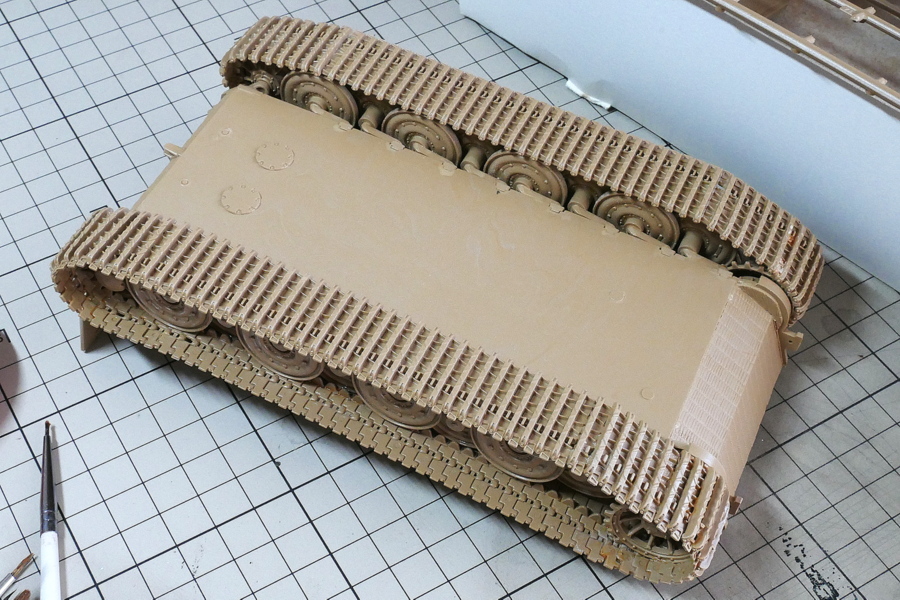
I was able to wrap it properly without a break.
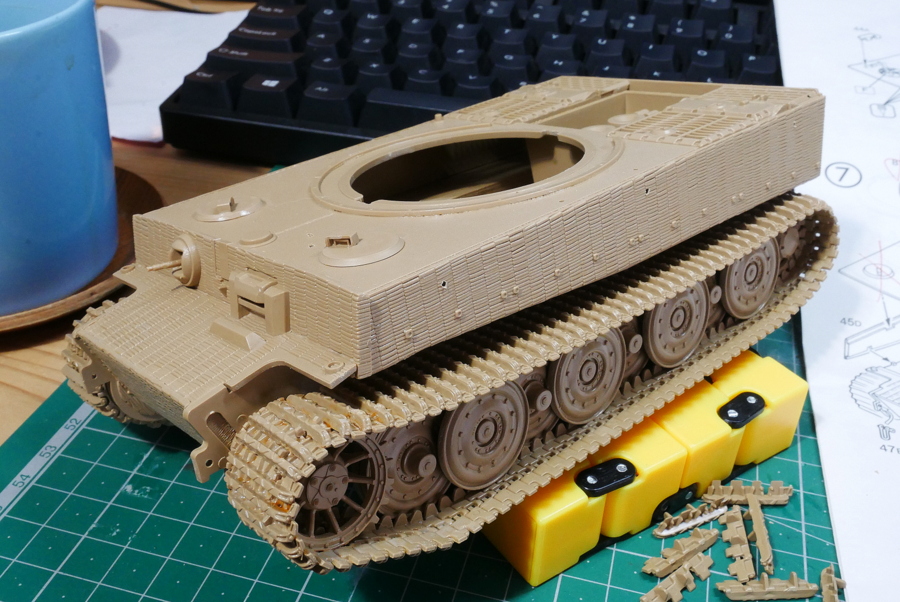
I’m sure this kit is old, but I quite like it. It’s easy because the Zimmerit Coating is pre-molded and doesn’t require any putty work, and the complex parts come together nicely to keep the number of parts down. I wouldn’t say I like to wear partially connected tracks, so I didn’t mind getting smaller, so it was even better if the pieces were one frame. That makes assembling easier because I can make fine adjustments in various places.

It hides but also has a big engine.
(2023/08/22)
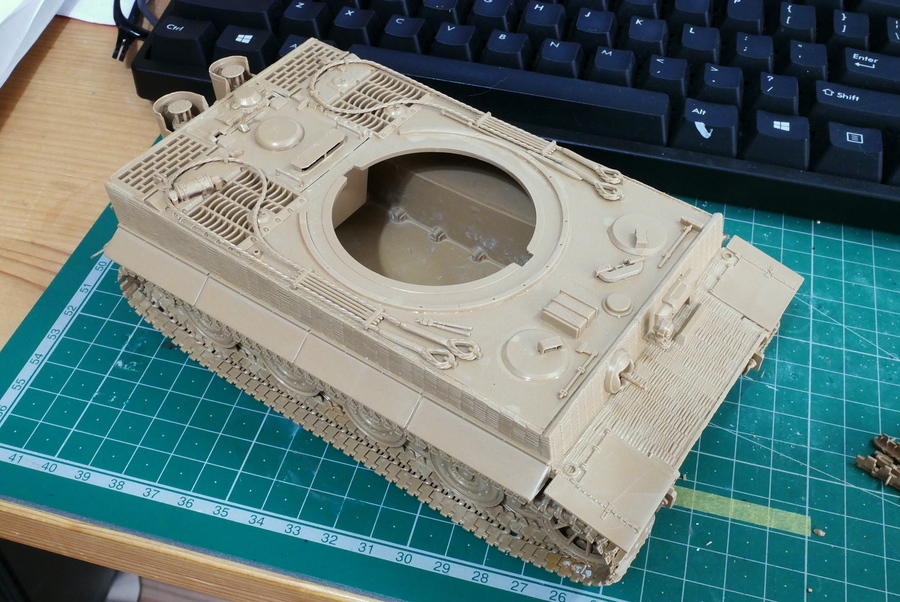
The tank body is assembled. There were cases where the direction of the small parts described in the instruction manual might be different, or there was no way I could bond them according to the instruction manual, but I just glued them in my rough feeling.
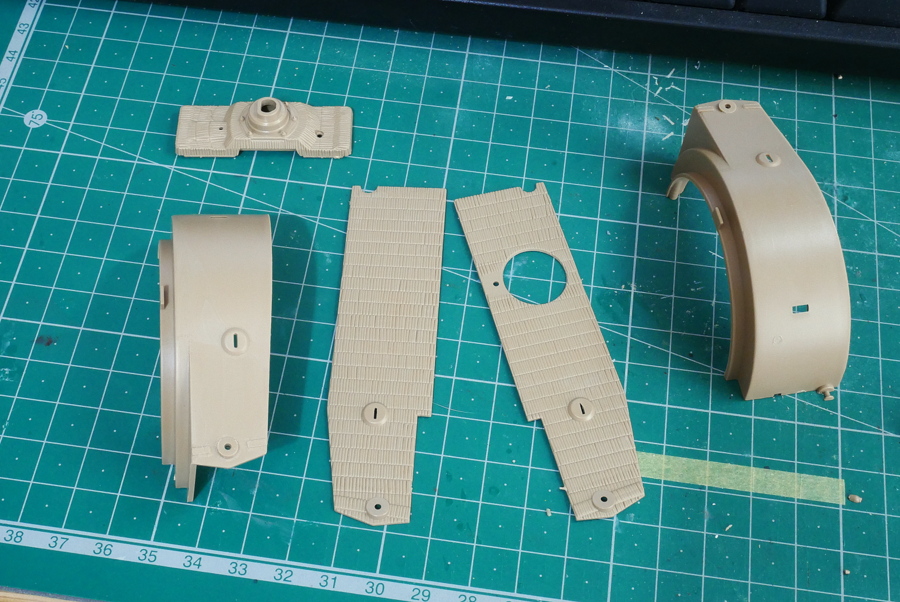
The complex parts on the front of the turret are beautifully molded with a Zimmerit Coating. What surprised me was the coating on the side of the turret, and I heard that it was made by pasting slightly thin sheet-like parts on curved surfaces. The King Tiger seats at MENG were decal-like, which was also an interesting attempt, but I think they are also entirely original, which is good.
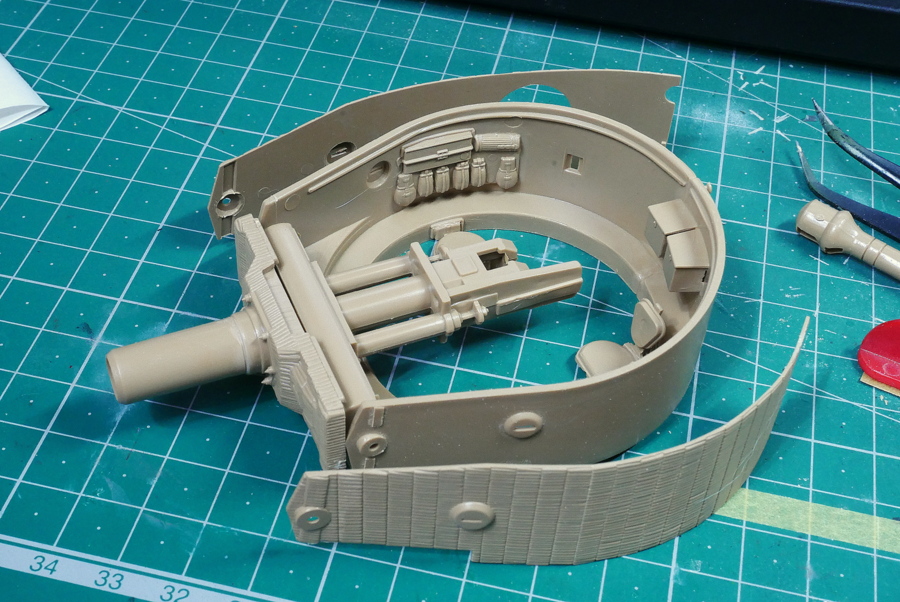
The interior of this Italeri Tiger was also easily reproduced. A bottle of water, a pouch of trinkets, a bag of machine gun cartridges?
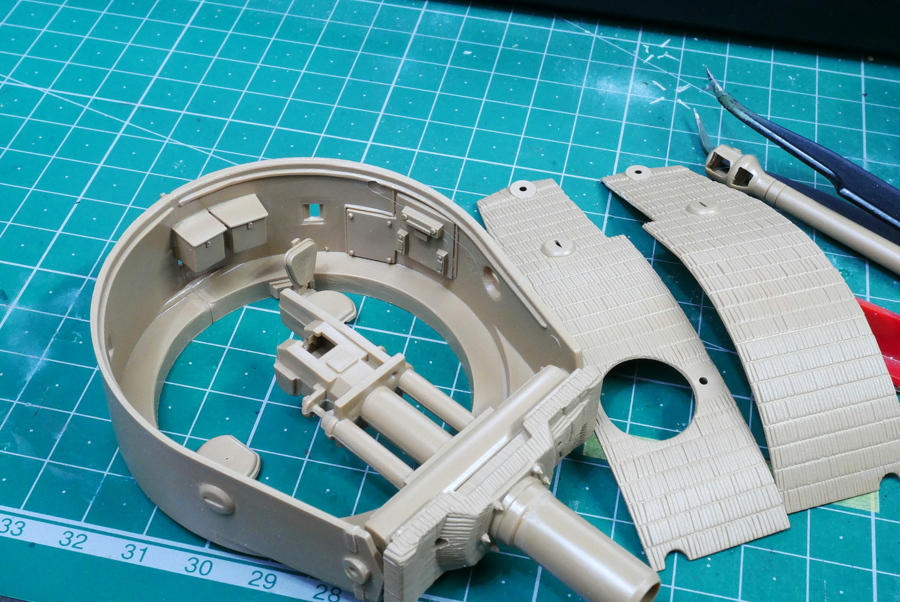
This side is also reproduced. Zimmerit Coating. The sheets curl up when pushed around with a round stick on a large eraser. It would likely crack from the ditch if I put too much pressure on it.
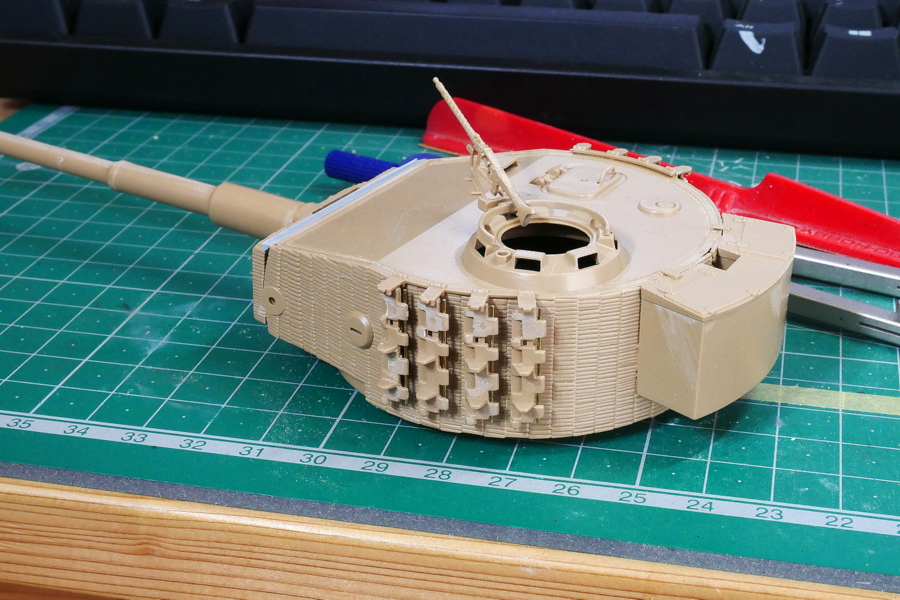
The spare tracks on the side of the turret and the handle on the upper side may have originally been parts to be built into the track, but they seemed to be just the right parts, so I diverted them. I haven’t installed it yet. I thought seeing the connecting pin on the spare track would be more realistic, so I tried to pass the metal wire through, but it was too difficult. This kit doesn’t have that level of reproduction to begin with. But if I glue a metal wire on the back, it looks reasonably realistic.
(2023/08/24)
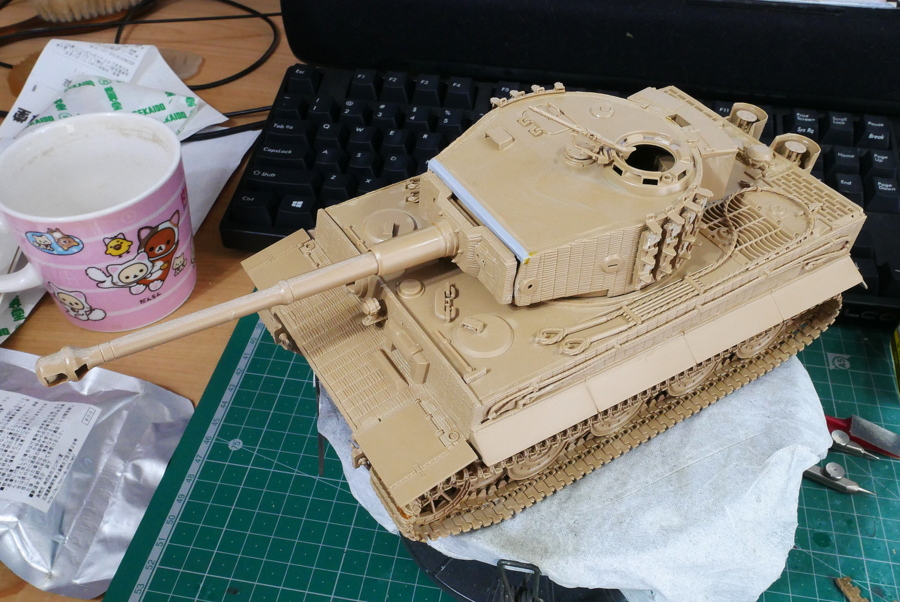
There was a big gap between the turret’s shield and the rim of the front of the turret, and it was hard to fix it in a standard way by squeezing it in. Was the Tiger-I originally a tank with lots of gaps? It bothered me, so I modified it with a plastic sheet covering the top. I also scraped the front sides of the turret a bit. The gun barrel moved up and down loosely, so I fixed it at a good angle.
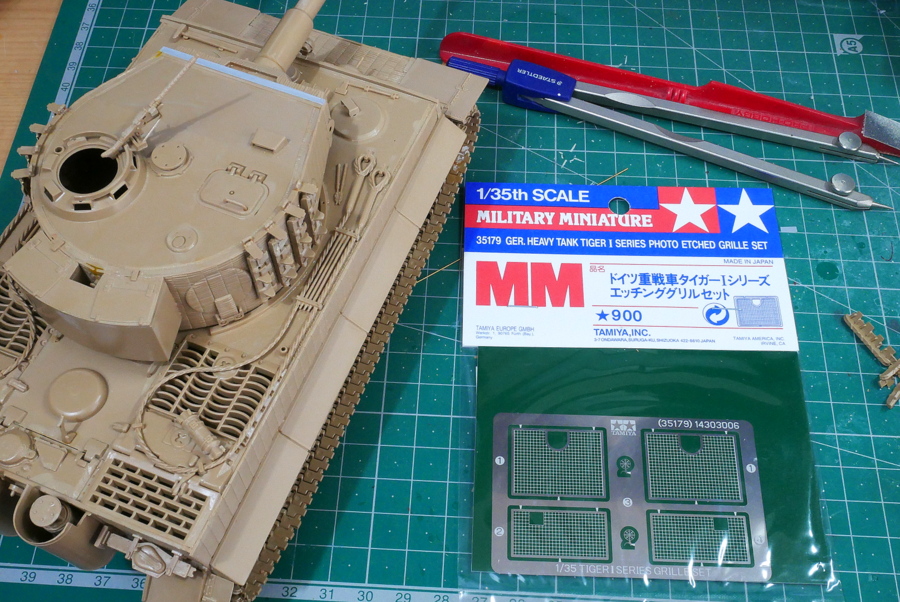
I ordered Tamiya parts because it doesn’t have a grill for etching parts. The list price has gone up a lot by 900 yen. I’m getting sad, but I guess I can’t help it. By now, I realized that I had glued the tow rope together and wondered if the etched parts would fit. As I set about making a kit on a whim, there are a few places where I feel clumsy.
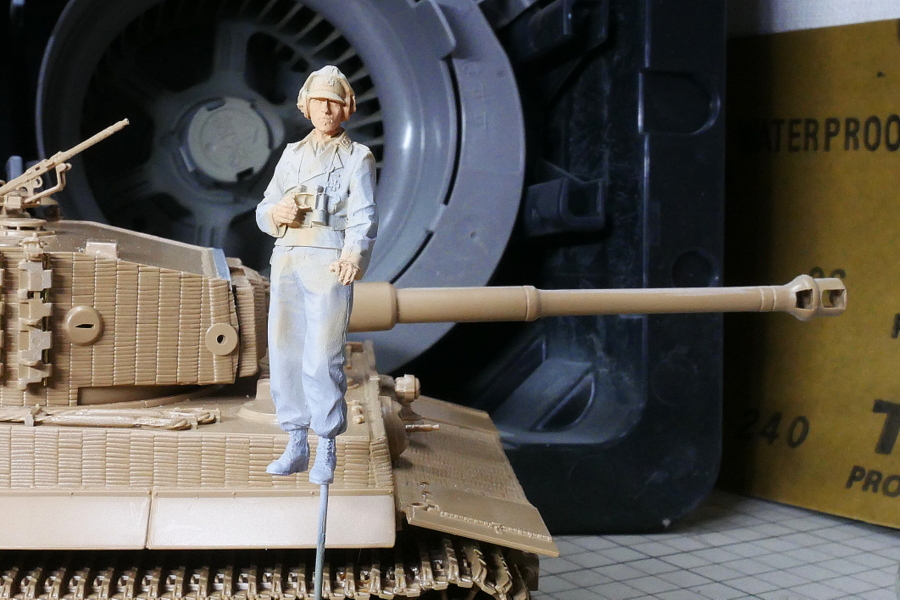
German tank crew resin figure became pretty realistic after surfacer and flat fresh.
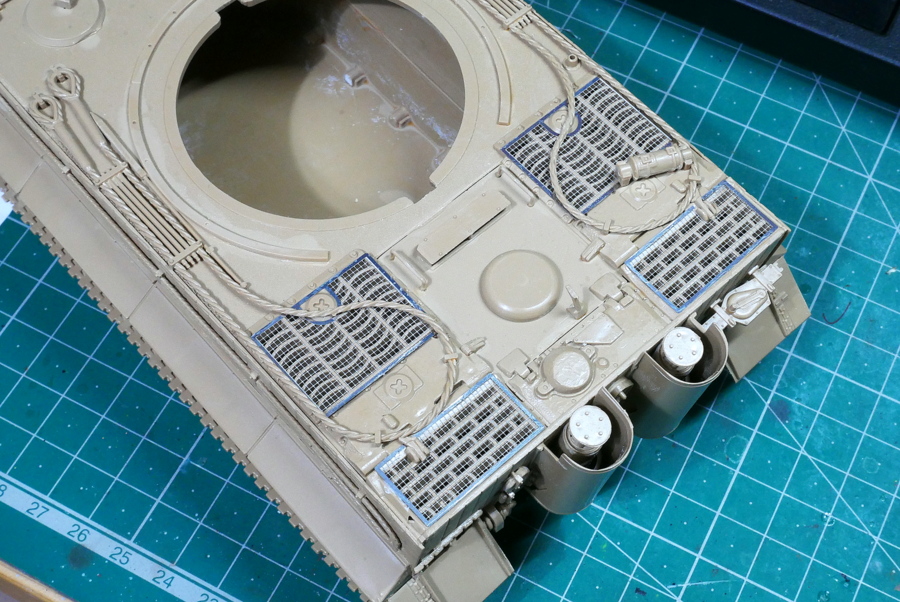
I tried attaching the engine grill etched part. It wasn’t easy because I should have glued it before attaching the tow wires. The smaller etched part is also slightly cut and adjusted, and it isn’t easy to work it because it is not a brass part.
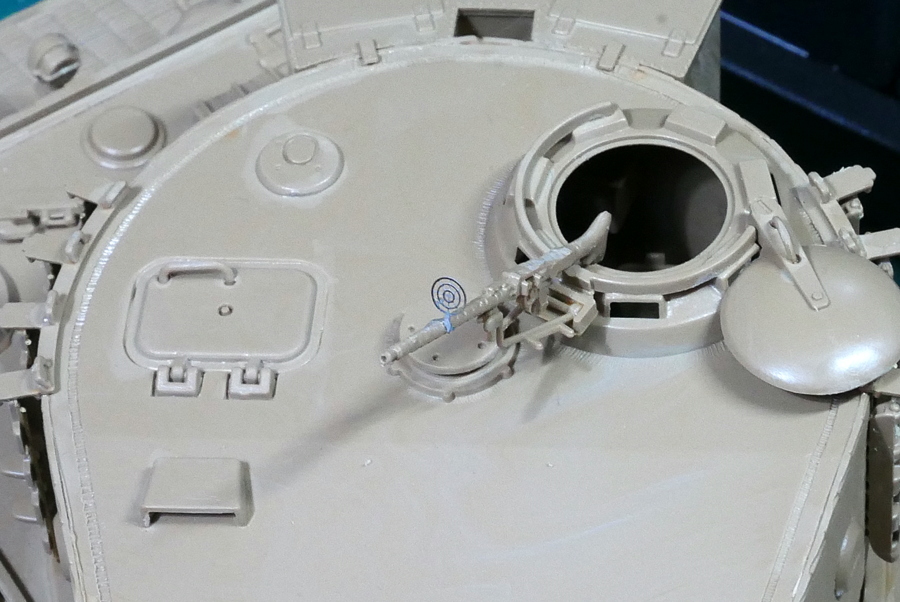
I also set the gun sights on the machine gun at the hatch. It looks a little better.
(2023/08/25)

The tank assembly is complete. I filled the putty in the small gap. Overall, it is excellent as it reduces the work because it is pre-molded for parts that need to be molded with a Zimmerit Coating. The detail of each part is that the mold is deteriorated, and there is a dull part. Some molds, such as Gepek Kasten, were good. I think it’s a kit I enjoy enough.
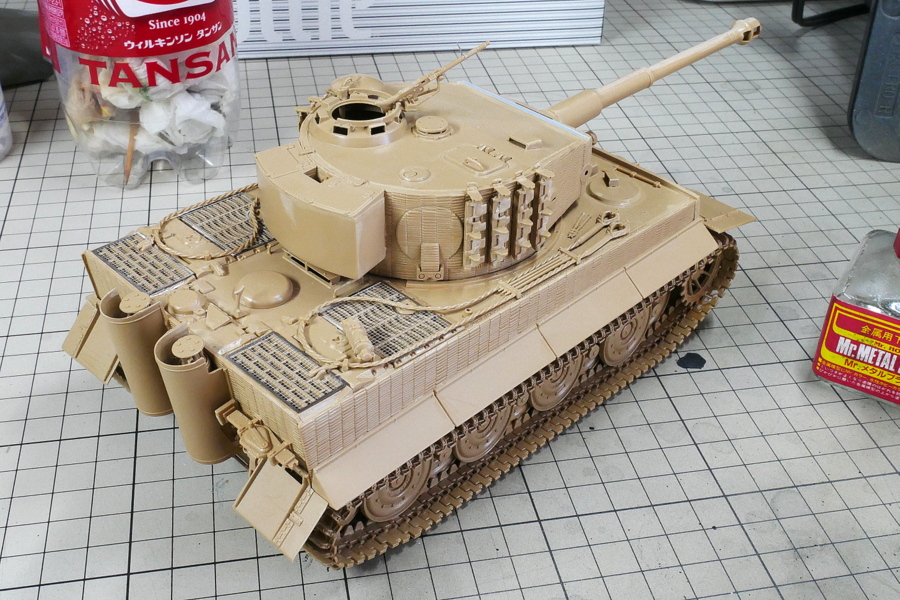
I guess it’s more realistic to use etched parts. The Tiger Tank doesn’t feel so big when I sometimes make modern tanks.
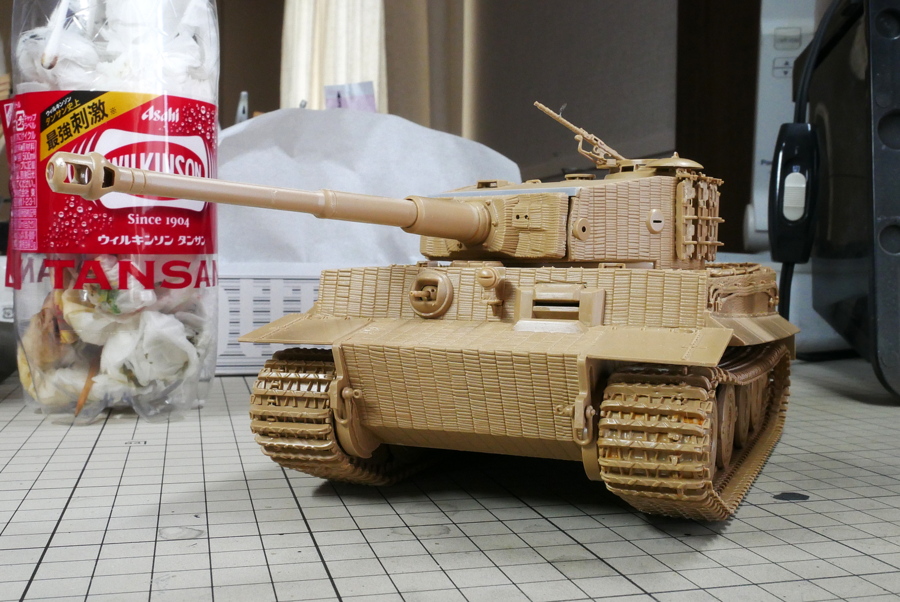
I forgot to attach a pin next to the turret.
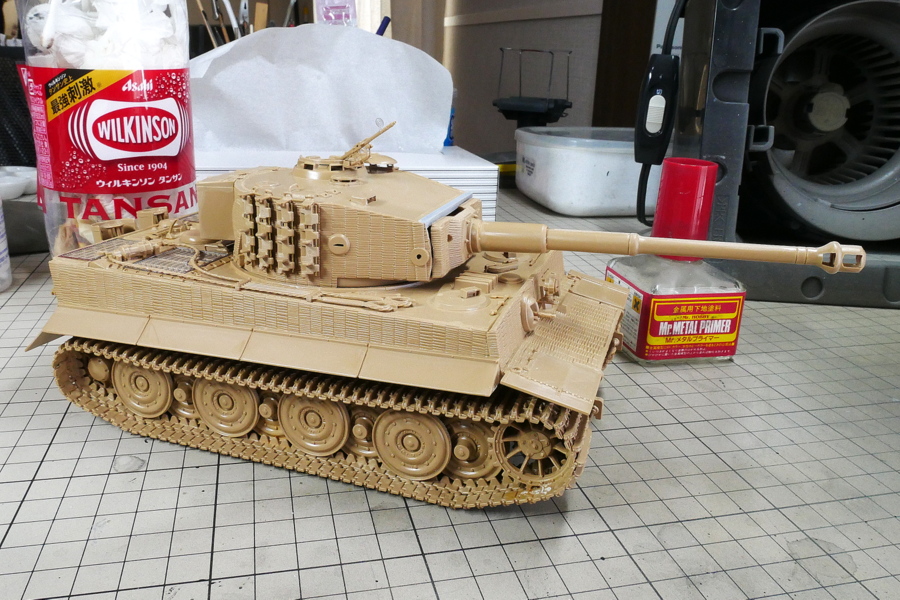
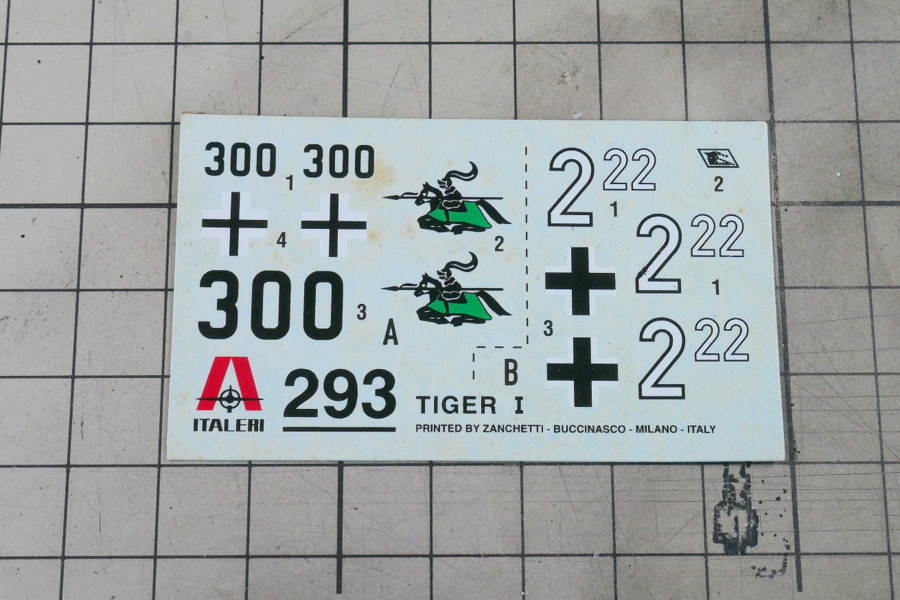
This decal is too old to use at first glance. Mark the knight charges with a spear; I think one should reverse the mark because it is a backward charge when I put it on the right side. The right and left are in the same direction. Is it a misprint?
(2023/08/27)
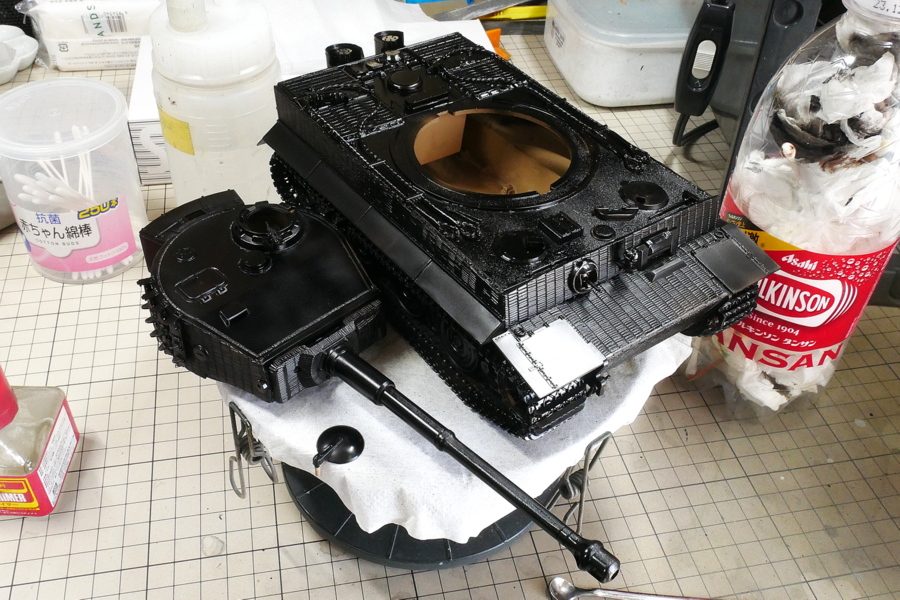
I underpainted it with black as usual.
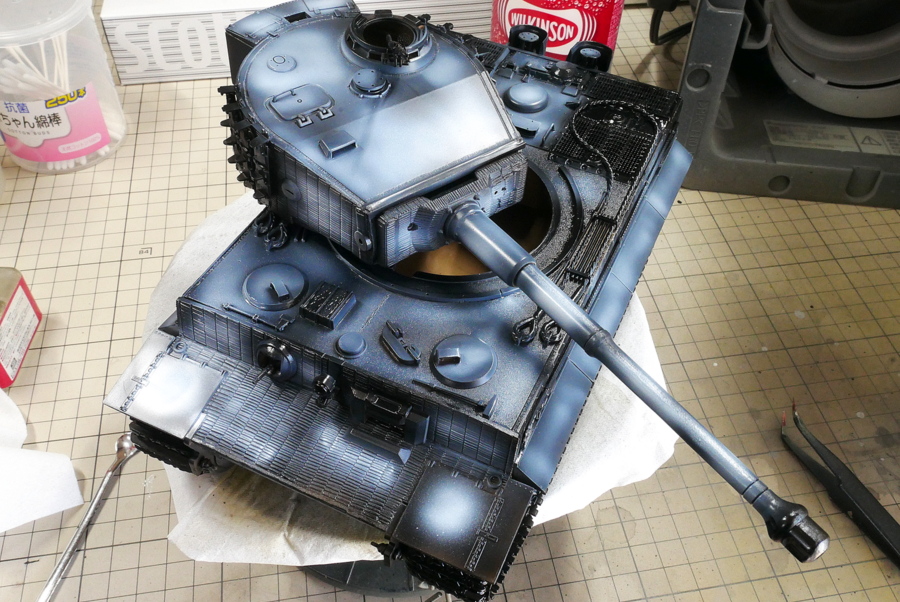
I blew light and dark in black and white beforehand to see if it would be a gradation paint. The conclusion is that the appearance doesn’t make a difference.
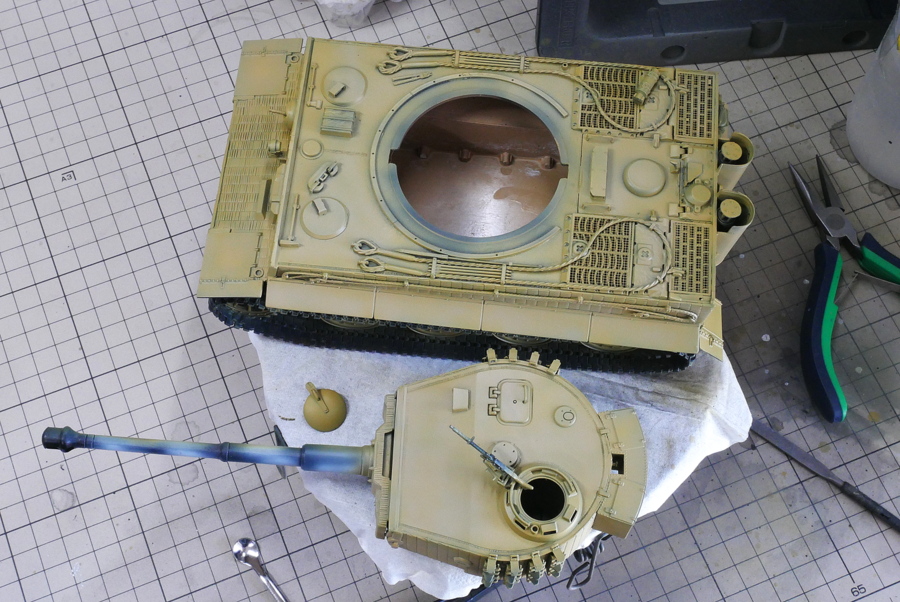
As for the gun barrel, I don’t think it’s common to operate this part without painting. It seems to take time to change the barrel of a tank in an outdoor workshop or warehouse. Maybe it was only in an emergency that they changed the barrel and went to the battlefield without painting. I can’t decide whether to paint with red primer, dark color, or the same color as the tank body, but this time, I’ll paint the barrel with dark color in honor of Italeri. Maybe two tanks that broke down at a maintenance factory near the battlefield were transferred parts, repaired, and painted differently.

Well, in Italeri’s manual, there was only an instruction to paint in a single color of tan. Only the barrel is dark gray. I wonder what it would be like with a Tiger tank of the 505th Heavy Tank Battalion. My impression is that dark yellow and red-brown camouflage paint is standard.
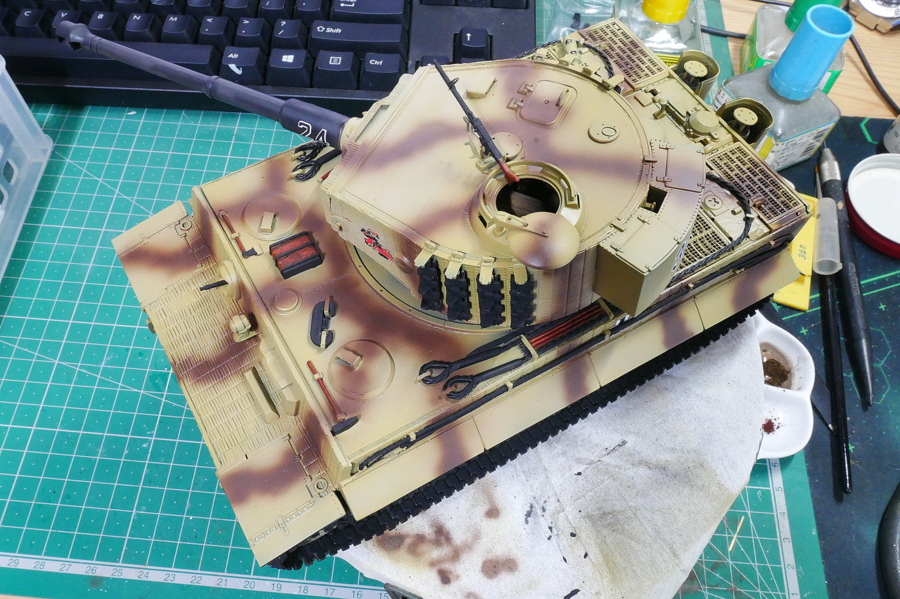
I made it with a spare decal I could use. I wonder if this time it will be the 4th tank of the 2nd platoon of the 3rd company. I’m not sure how the actual tank is, but I’m satisfied because I wanted to put a knight’s mark on it anyway. I’m glad I pasted it nicely.
(2023/08/29)
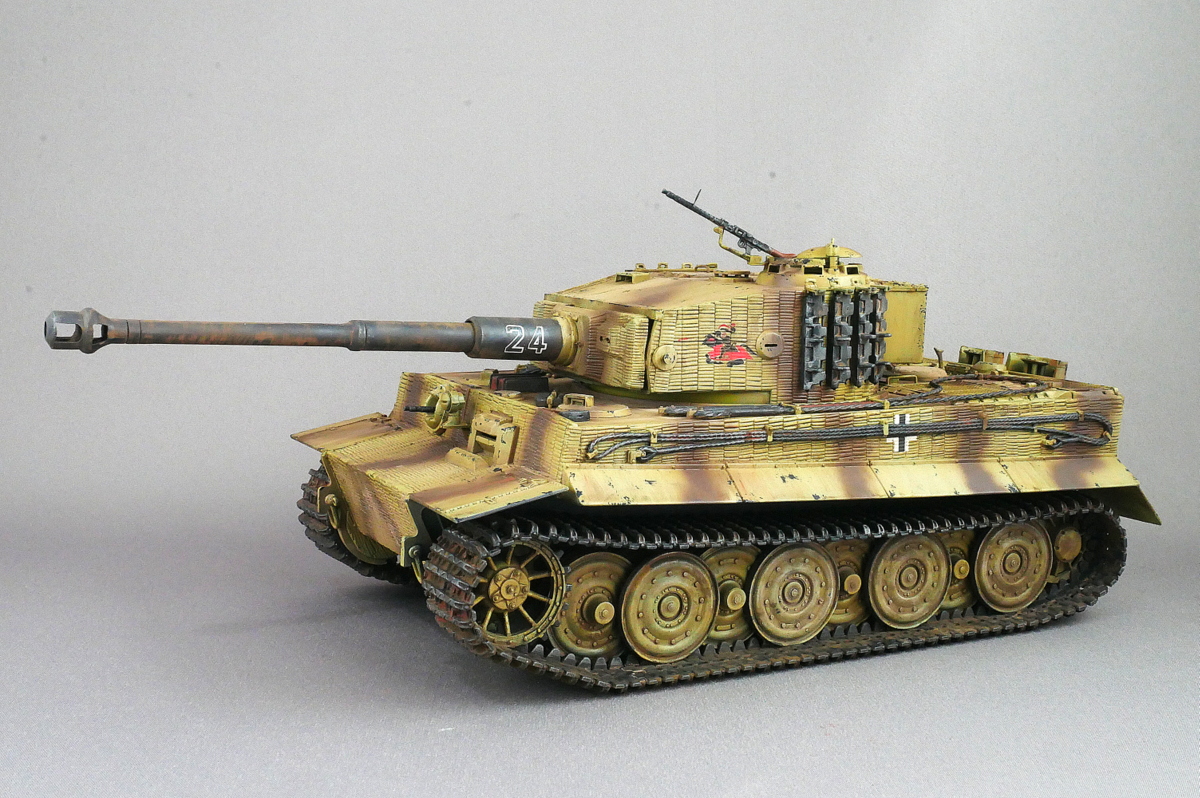
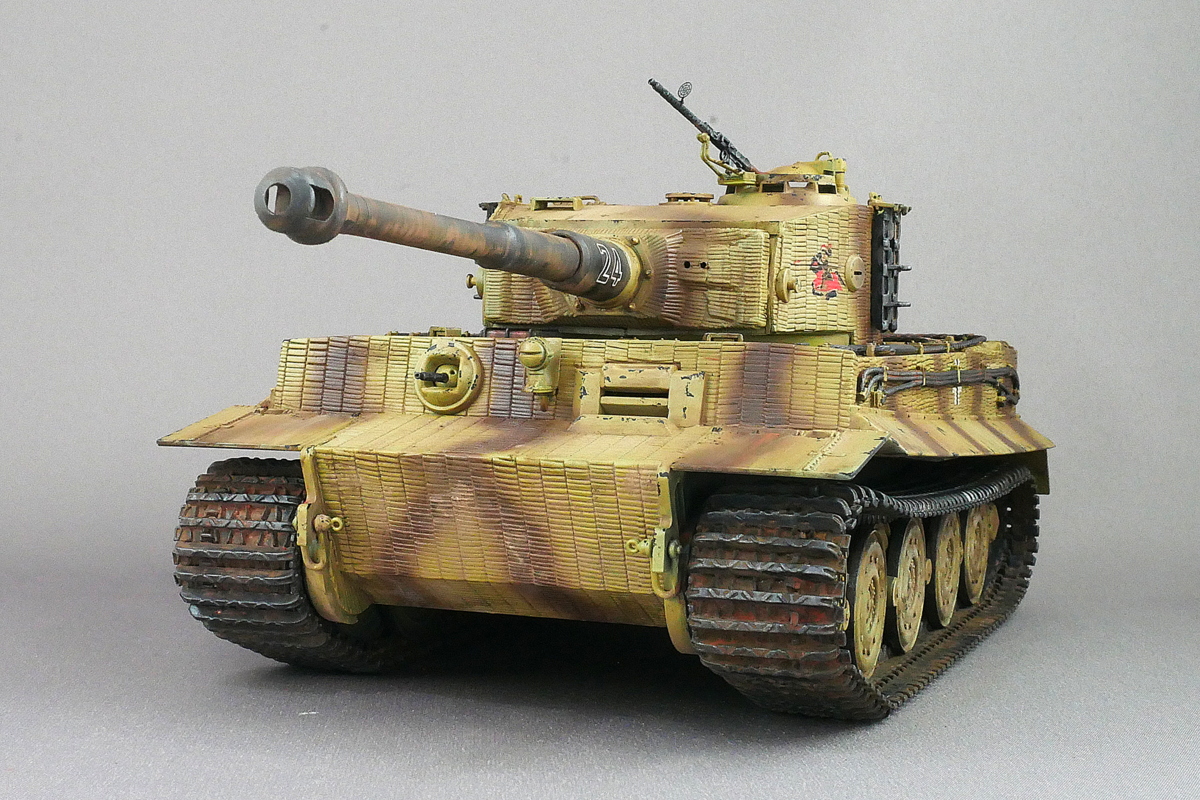
Italeri’s Tiger I is finally complete—this time, I chose two-color camouflage paint. Only the barrel is dark gray and a bit irregular.
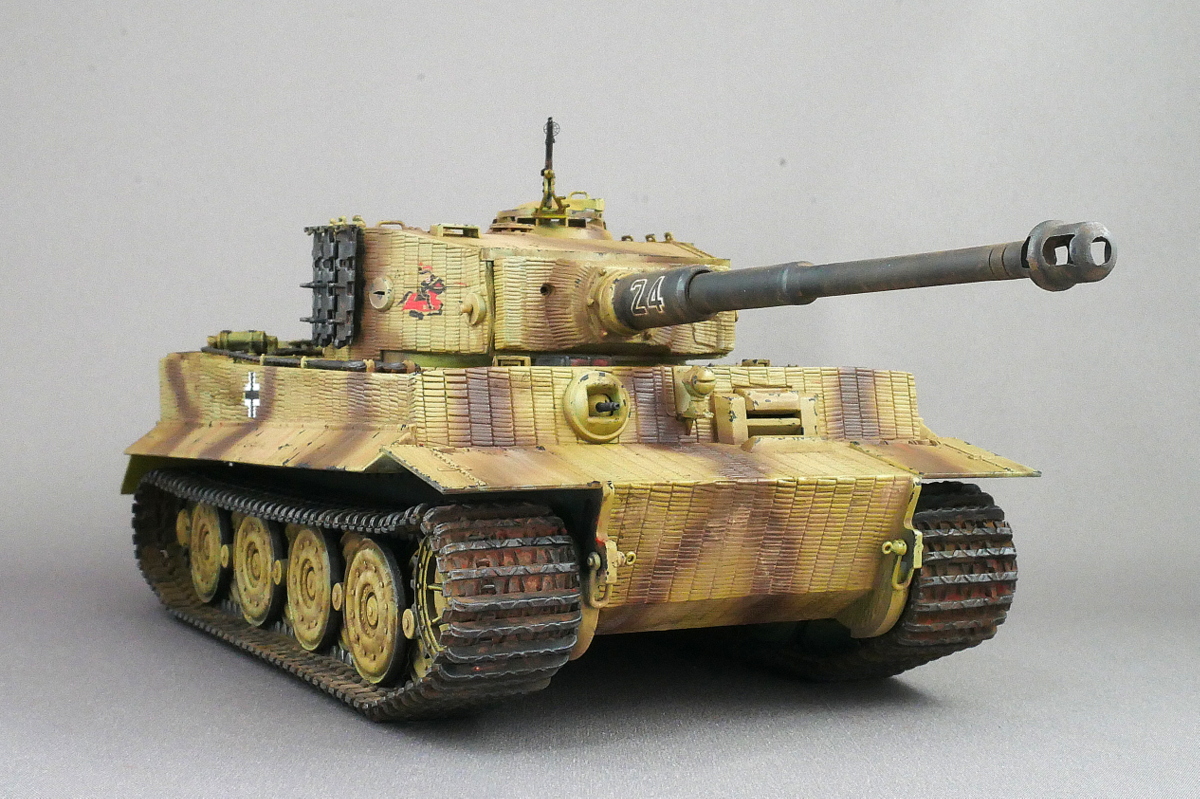
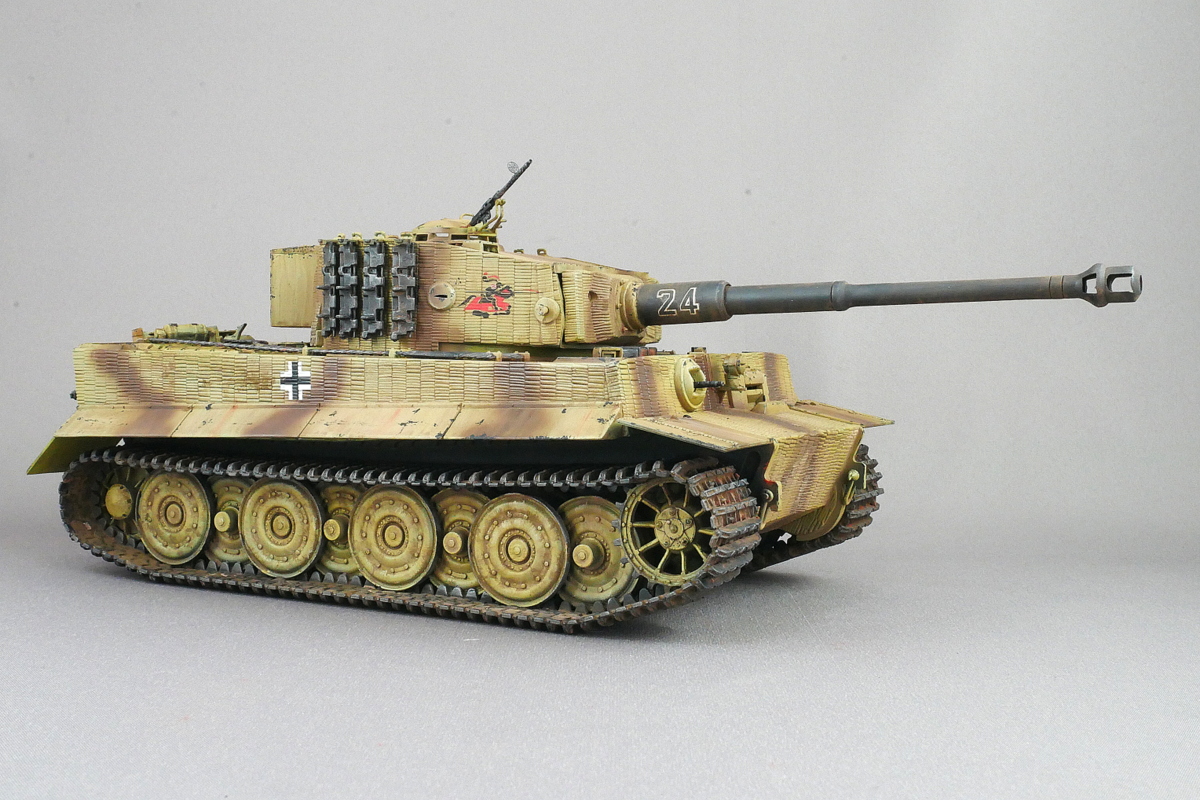
It is a mark of a knight with a spear that is unique as it belongs to the 505th Heavy Tank Battalion. Regarding timing, I think it will be between the summer of 43 and the summer of 44, as it is Tiger I.

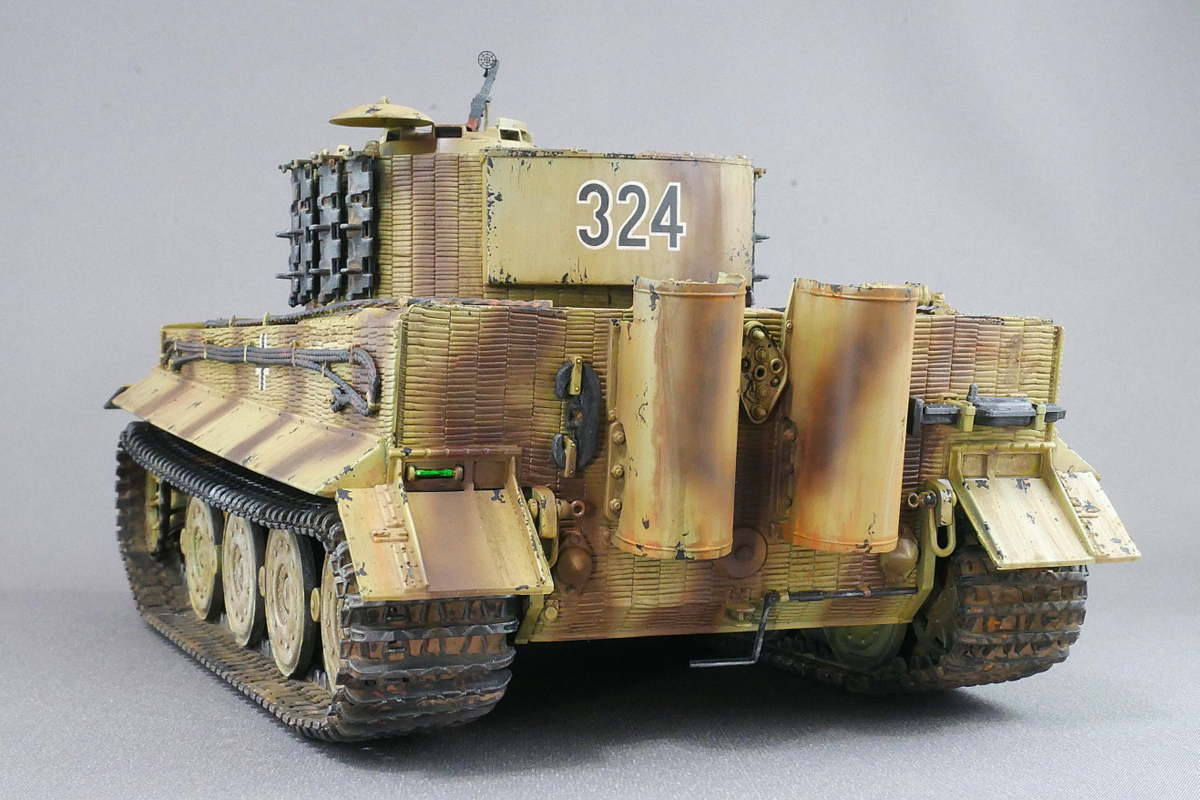
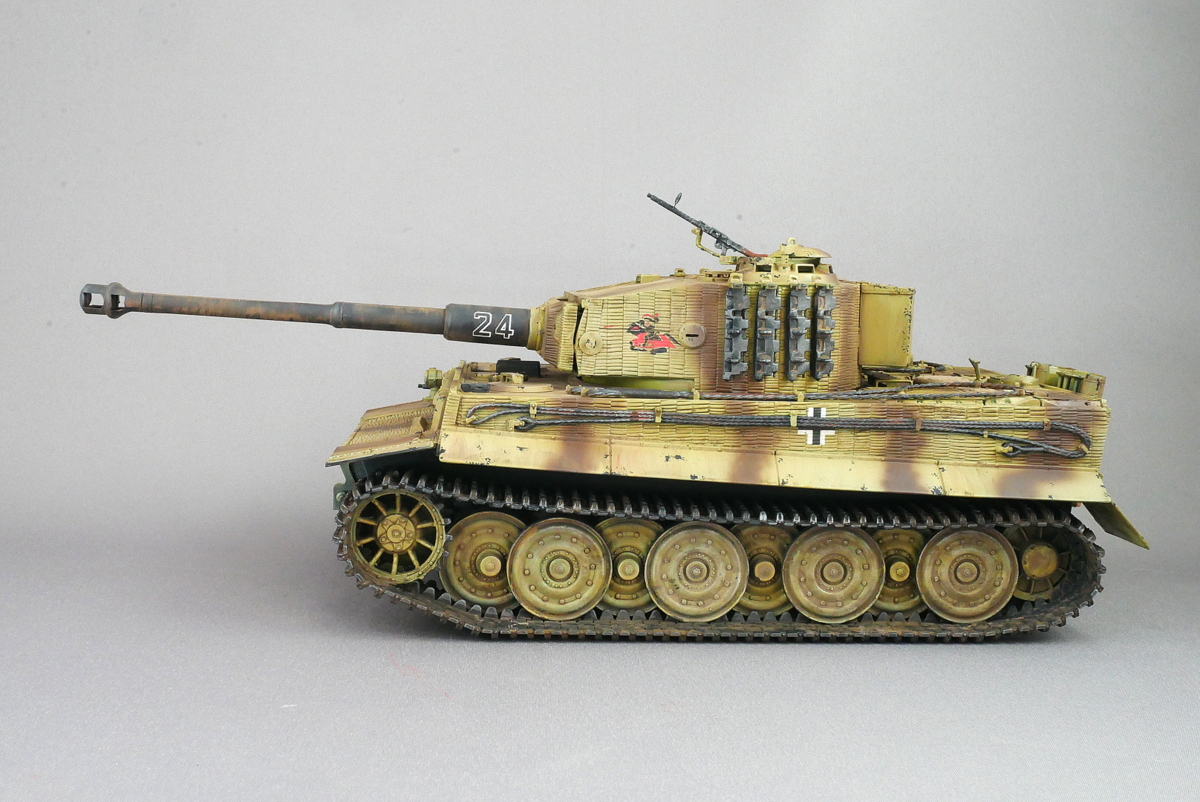
The kit turret looks symmetrical from above. The real thing was wider on the gunner’s side.
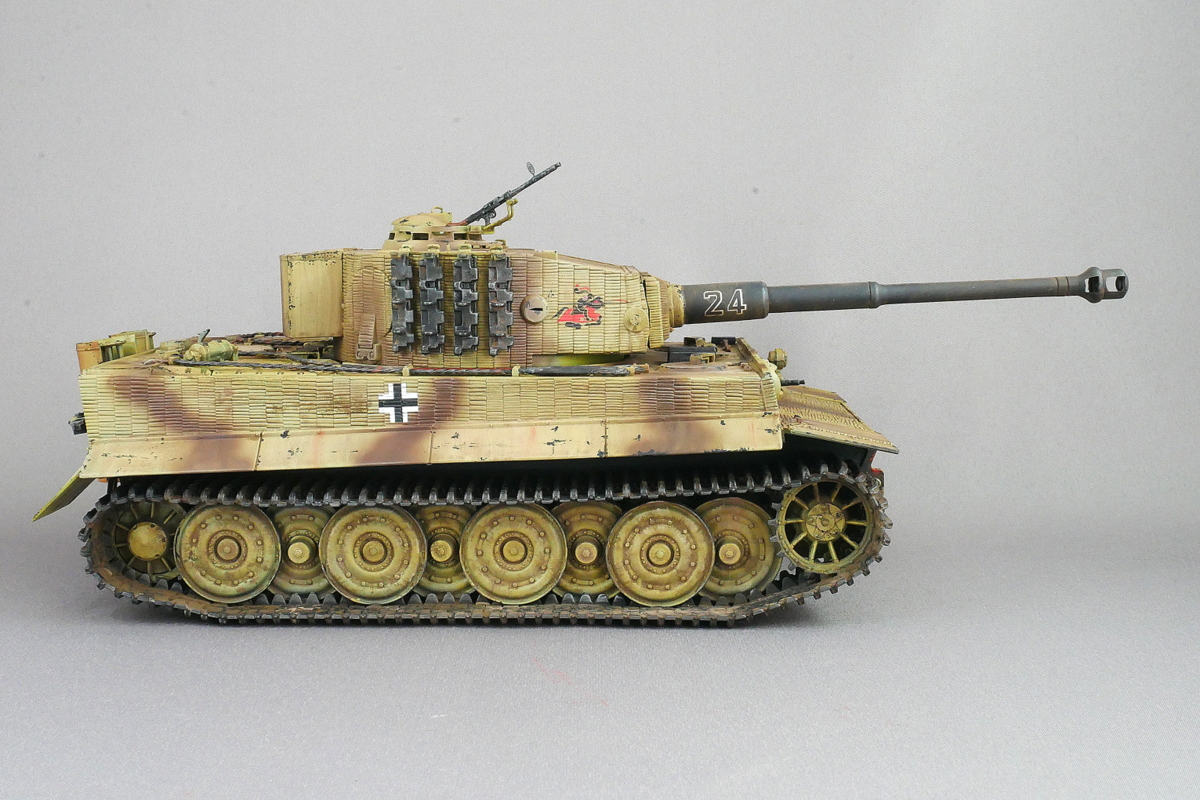

I thought there was less on-board equipment than Tamiya and Dragon kits. If you are concerned about it, it should be possible to do something about it by reusing spare parts. The shape of the jack is not very good.

I was bothered by the gap between the shield and the turret’s top armor, so I covered it with a plastic sheet to fill it appropriately.
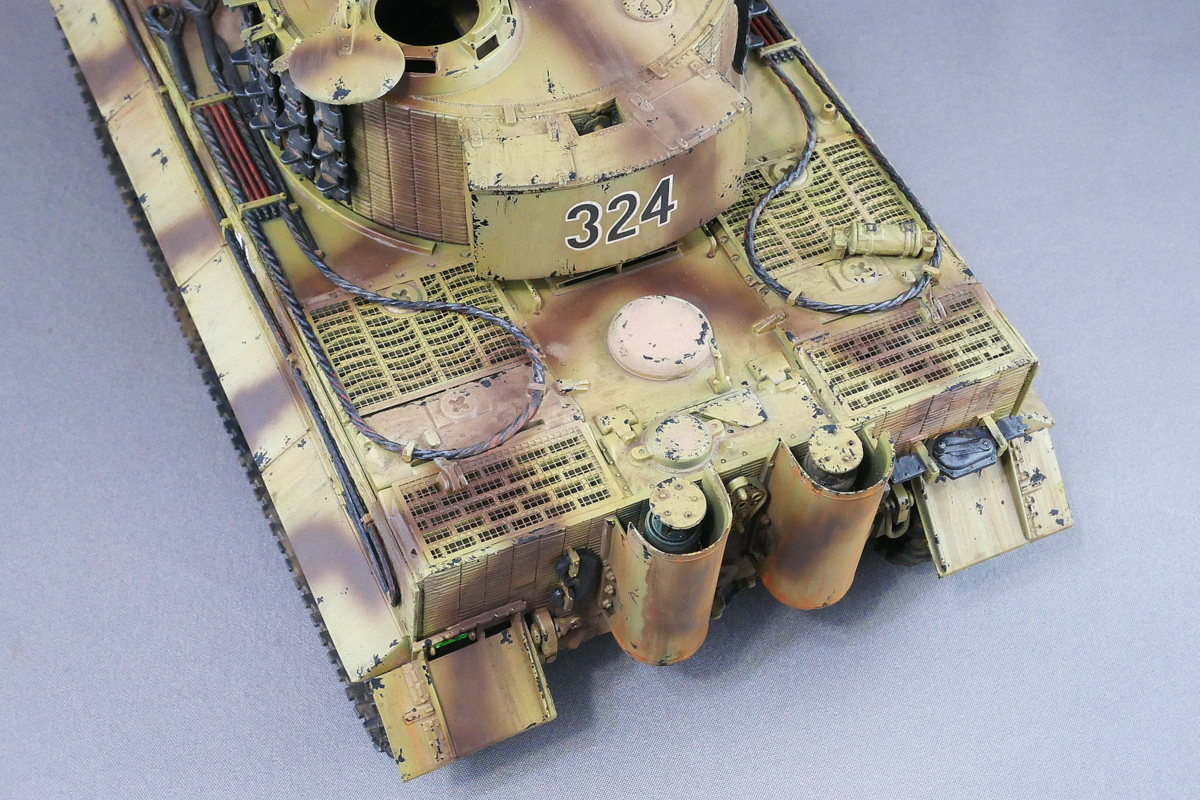
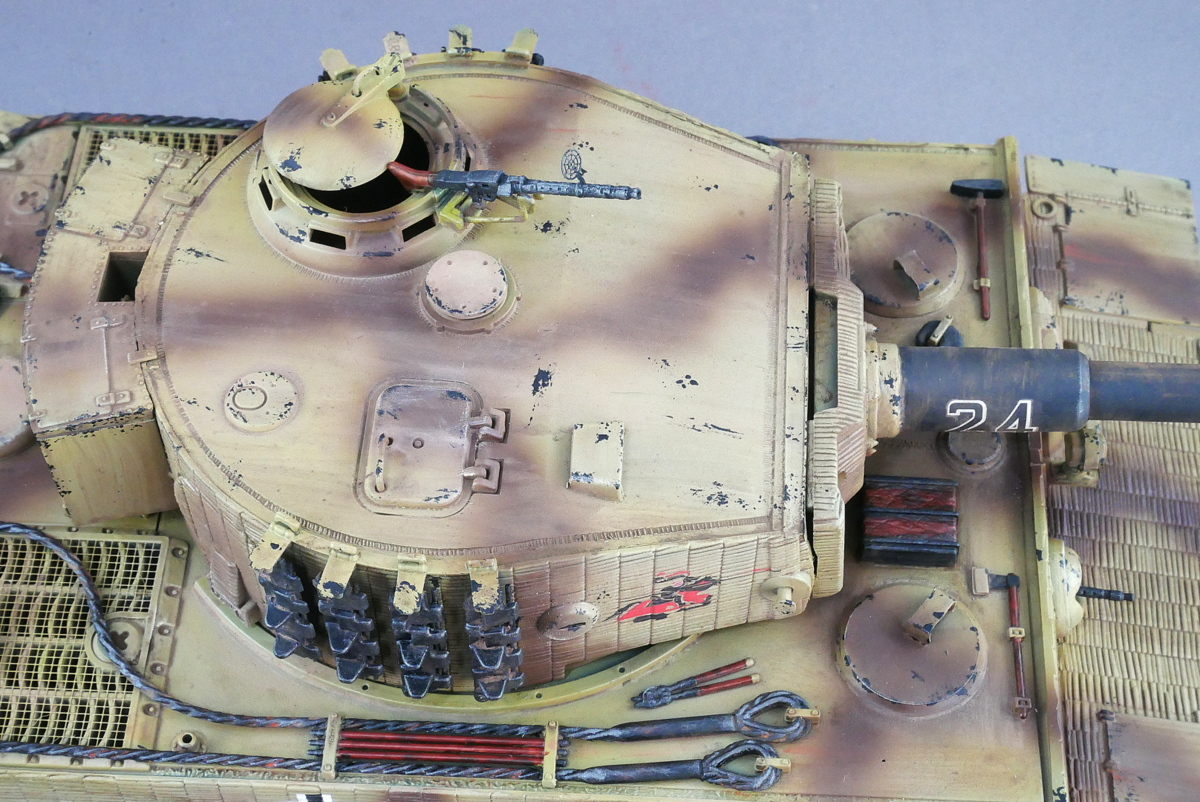
The Zimmerit sheet covering the turret had to be carefully fitted and fixed.
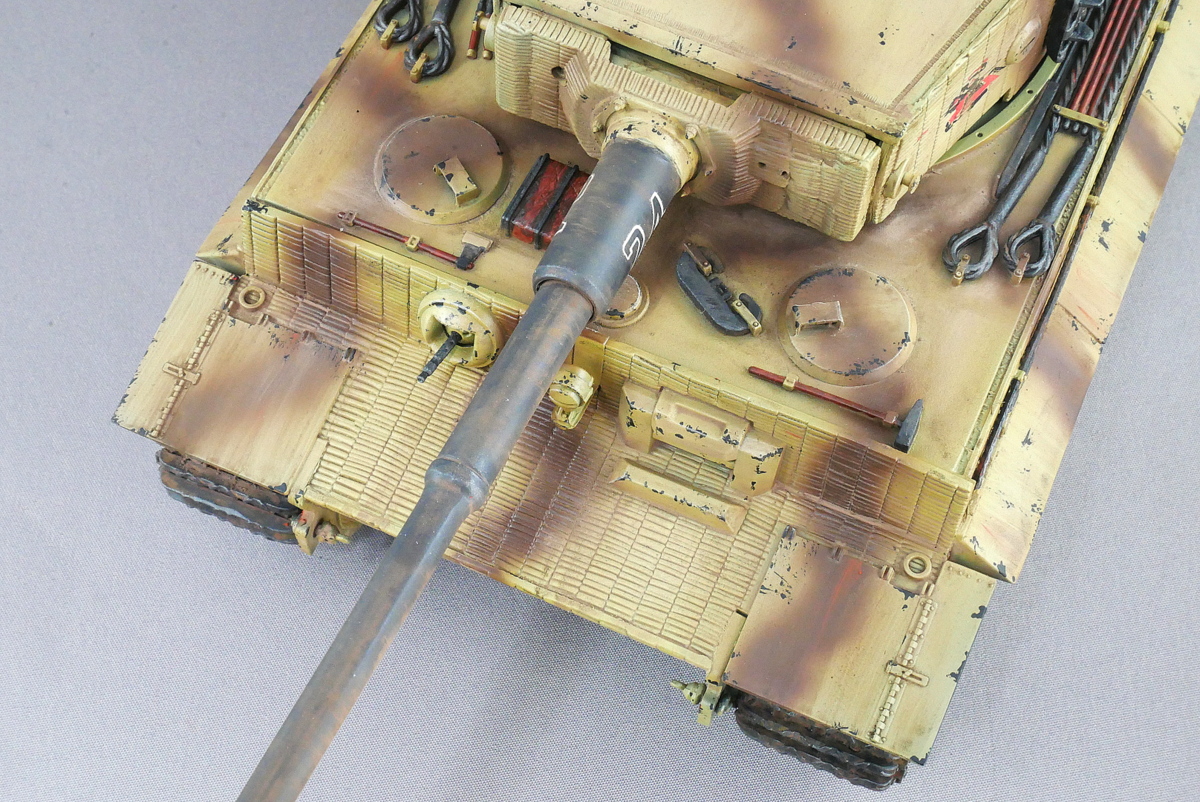
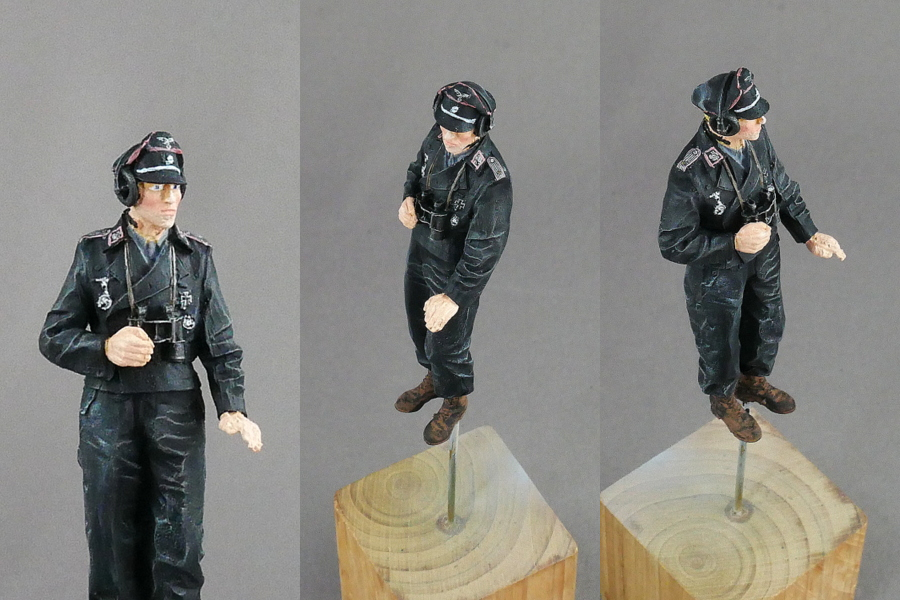
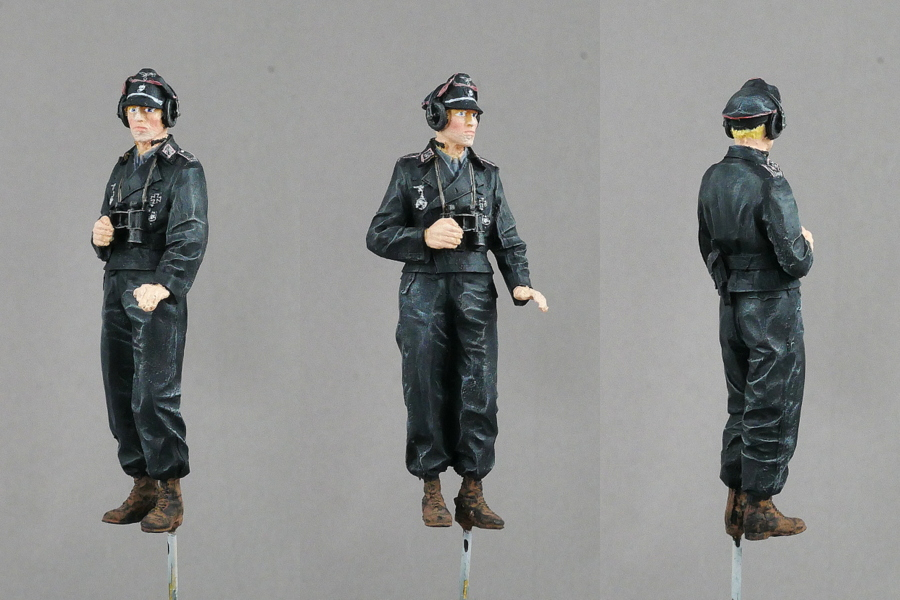
Decals were used for the figure’s detailed class insignia. It’s hard to paint the face and other fine areas. Maybe I should change brushes.

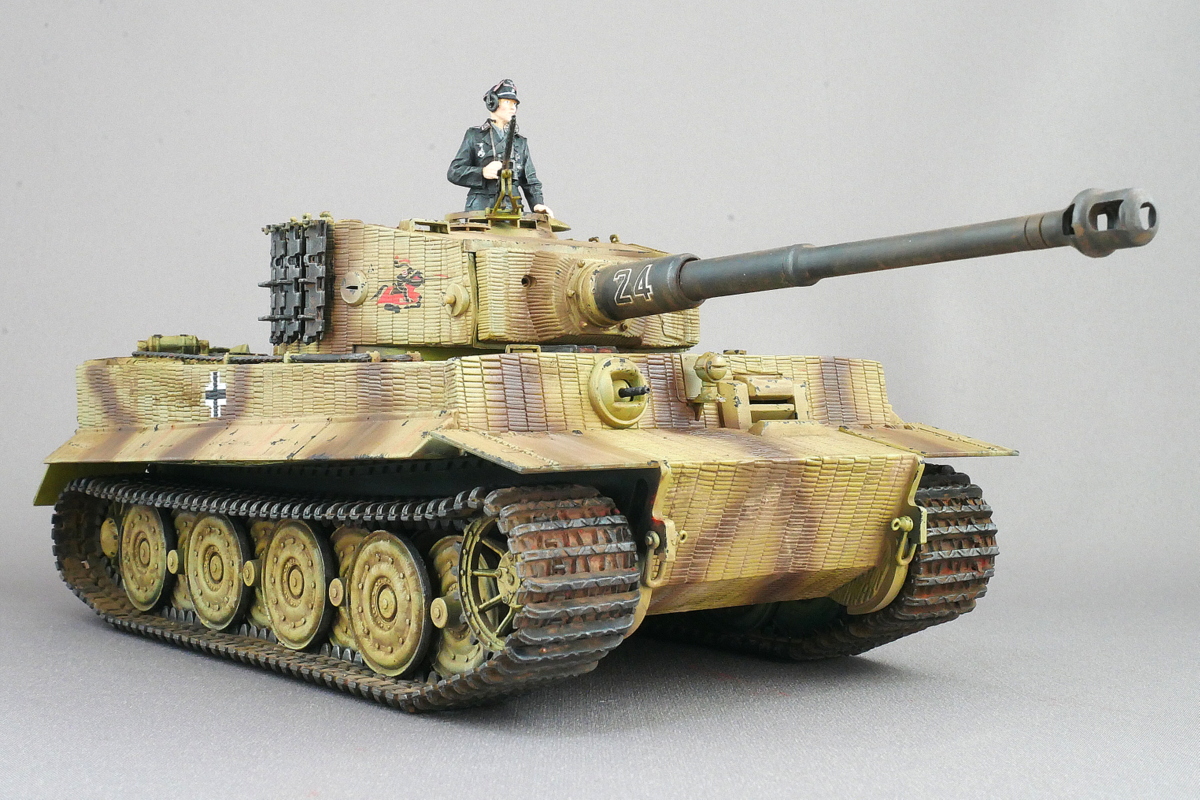
I put a little rust-colored weathering on the joint of the track. It might be a bit of a model accent. If I do it too blatantly, it’s contrived, and I always get confused about this part.
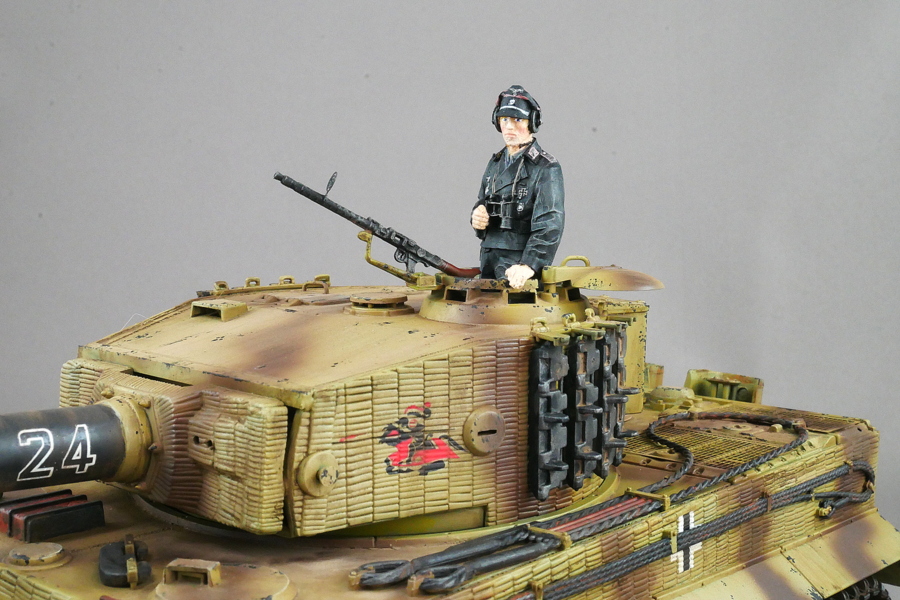
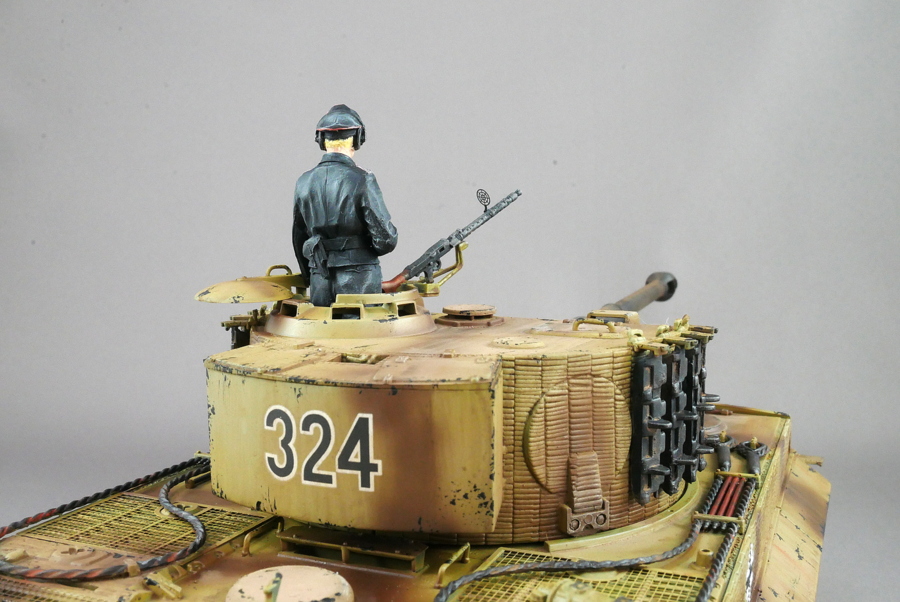
It was a figure with just one commander this time, so I think I’ll put more on it someday.
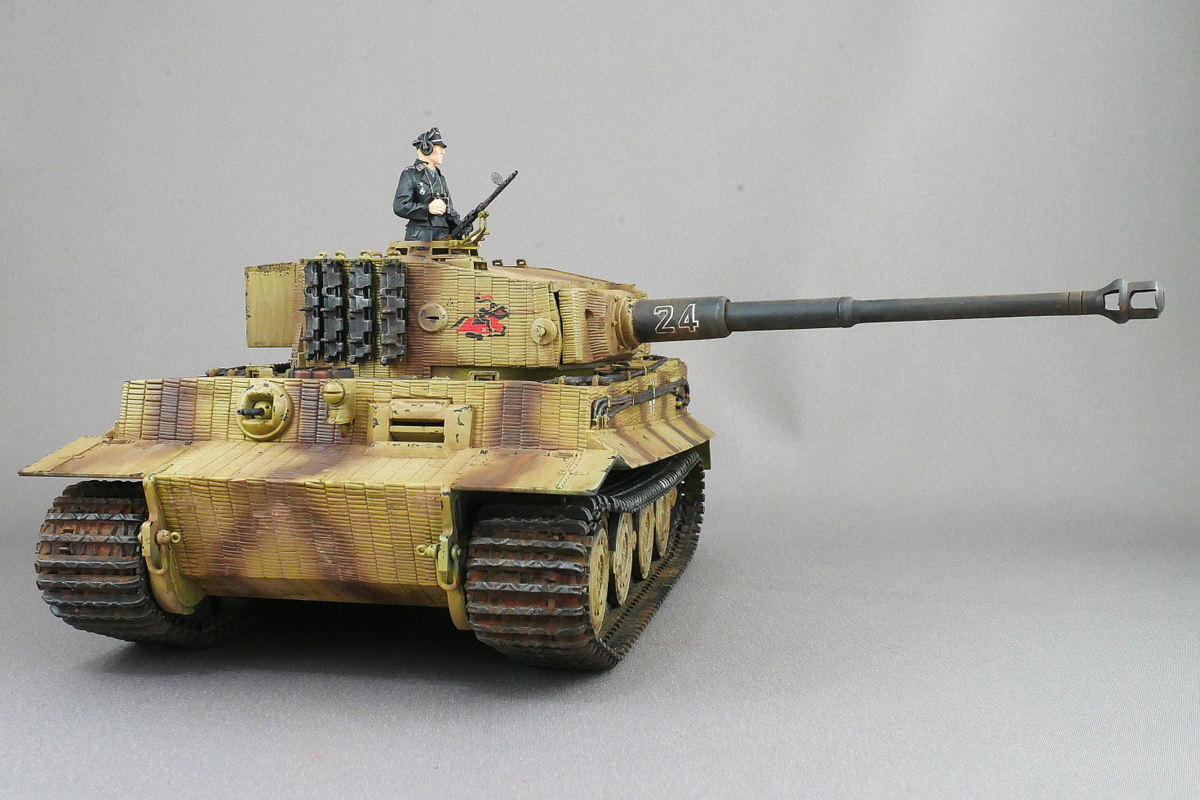
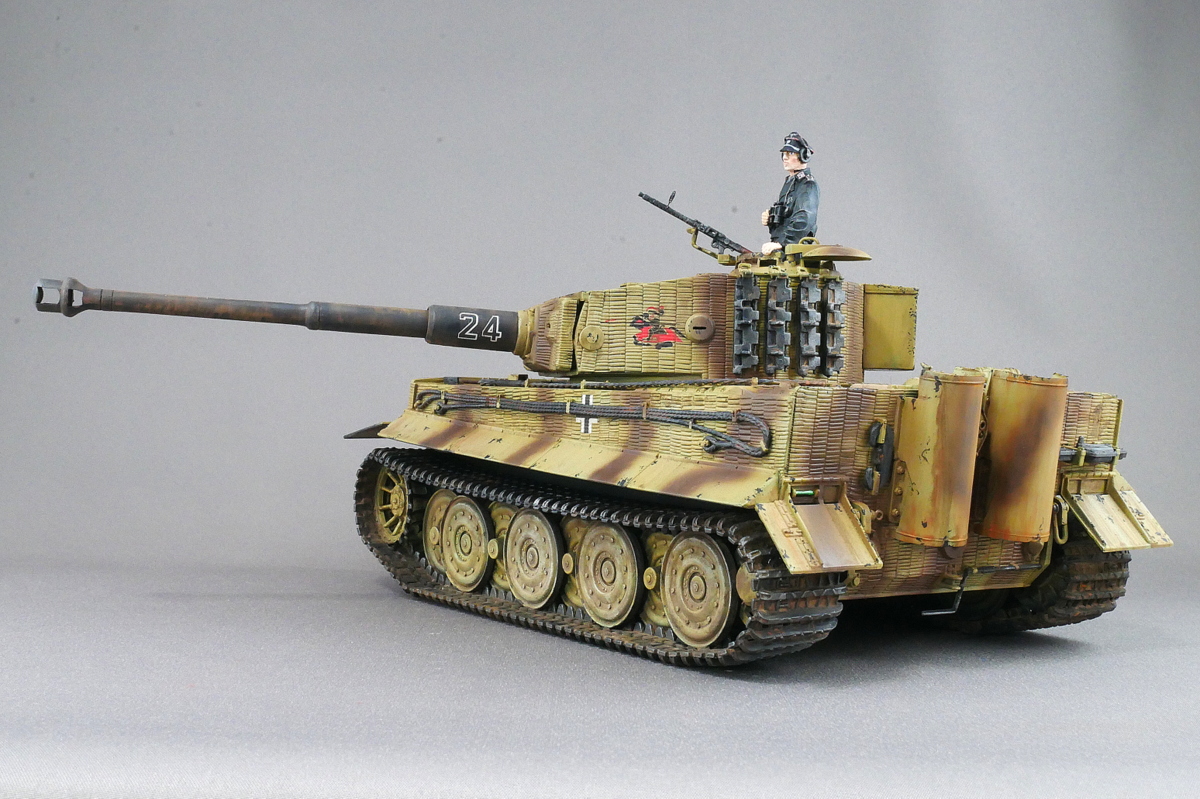
The mold is a bit poorer than the Dragon kit, but it’s acceptable. It was an interesting kit made with a Zimmerit coating that was pre-molded or thin sheets.
(2023/08/30)



コメント